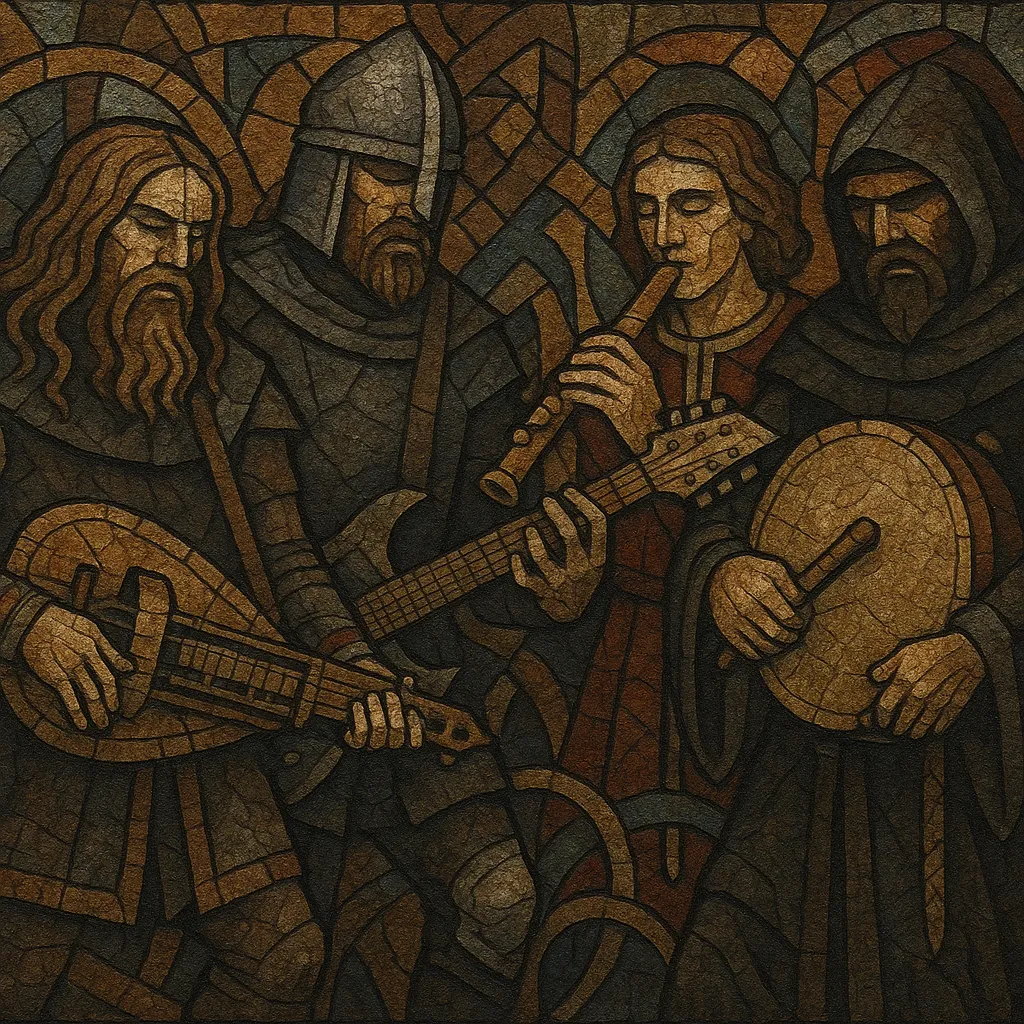Medieval metal is a subgenre of folk/rock/metal that fuses heavy guitar riffs and modern drum kits with melodic and rhythmic materials from medieval and Renaissance music.
It typically features authentic historical instruments such as bagpipes, hurdy-gurdy, shawm, recorder, nyckelharpa, lute, and various frame/drone drums alongside overdriven guitars and bass.
Songs often use modal melodies (Dorian, Aeolian, Mixolydian), drone tones, parallel fifths, and dance rhythms reminiscent of estampies, jigs, and bourrées, while lyrics draw on Middle High German or Latin texts, minstrelsy, legends, and historical themes.
The result is a rousing, festival-ready sound that alternates between stomping anthems and ornate, folk-tinged passages.
Medieval metal emerged in Germany in the 1990s as bands began merging live medieval/early-music instrumentation with hard rock and heavy metal frameworks. The groundwork was laid by the neo‑medieval and medieval rock scenes, which popularized historically informed instruments at medieval markets and festivals. Early adopters such as Subway to Sally (founded 1992) and In Extremo (founded 1995) defined the template: muscular riffing, big choruses, and lead lines played on bagpipes, hurdy‑gurdy, and shawm.
By the late 1990s, the style had crystallized, with projects like Tanzwut (a metal/industrial offshoot of Corvus Corax) expanding the palette toward darker timbres and mechanized grooves. The 2000s saw charting acts (e.g., In Extremo, Subway to Sally, Saltatio Mortis) and a dedicated live circuit across German-speaking countries, bolstered by medieval fairs and major metal festivals. Parallel experiments (e.g., Haggard) blended medieval modalities with symphonic metal, showing the style’s adaptability.
In the 2010s, the sound diversified: some groups leaned into power/arena-metal production, others emphasized historical authenticity or humorous, tavern‑song aesthetics. Acts outside Germany, such as Obsequiae (USA), adopted medieval melodic language within black/atmospheric metal textures, demonstrating the idiom’s global reach. Today, medieval metal remains a fixture of European festival culture and a recognized branch of the broader folk and metal continuum.


